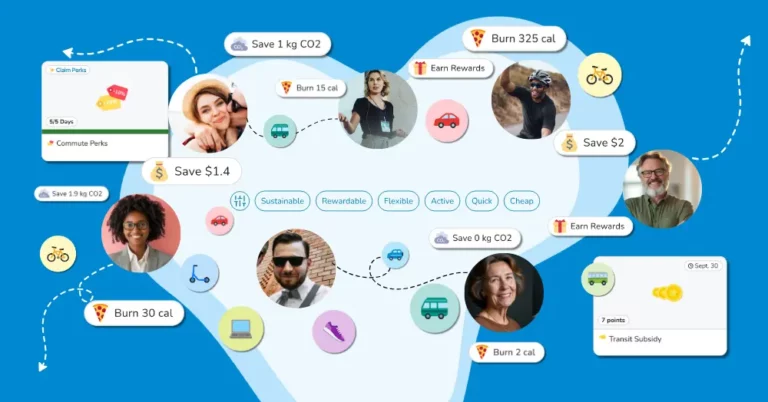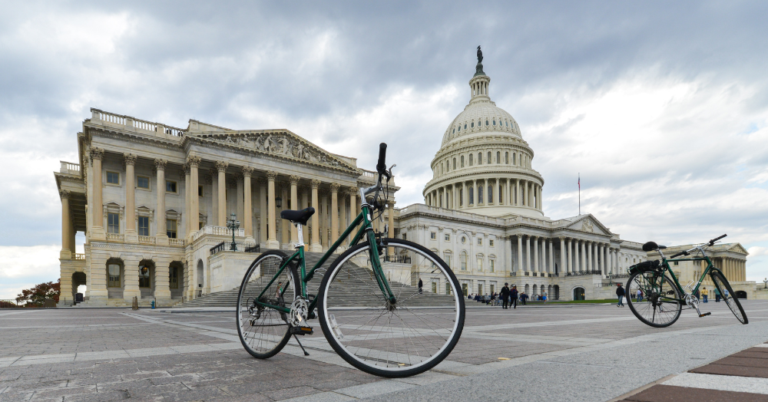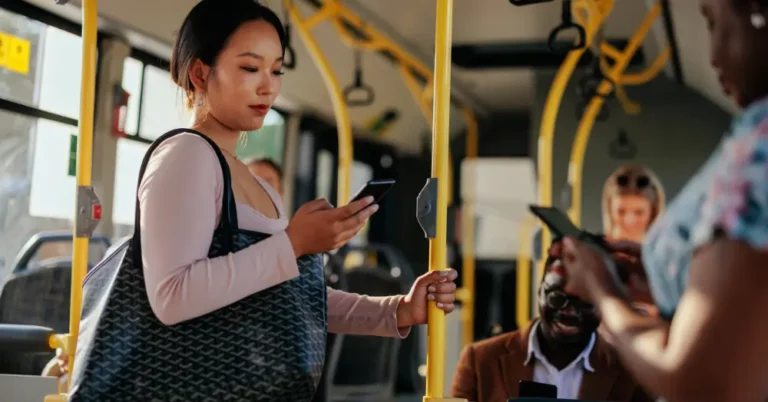Are you confused by commute trip reduction ordinances or compliance targets for vehicle miles traveled? Let us explain.
More and more employers are implementing commute trip reduction (CTR) strategies, aimed at reducing the number of cars coming to the workplace, even if they aren’t mandated to do so.
While a growing number of jurisdictions and development agreements require employers to implement and report on trip reduction initiatives, there are a number of overlooked benefits to the organizations themselves — from employee experience to reduced infrastructure costs. Remote work arrangements obviously take the pressure off, but any organization can benefit from an effective trip-reduction initative. Let’s take a look at the various ways businesses can make trip reduction a valuable and productive part of their commute management strategies.
Carpooling
Ridesharing is a powerful method of reducing the number of single-occupancy vehicles at your workplace. Participants enjoy all the benefits and convenience of point-to-point travel, all while busting stress, boosting collegiality, and saving money.
Social carpooling features in CommuteHub offer a powerful, tech-driven solution to help colleagues find partners to share rides with. They also provide many support and management features for commuters, including messaging, route planning, and cost tracking capabilities.
Hybrid work arrangements
Internet connectivity has transformed the workplace in many ways, including expanding it beyond the brick-and-mortar office. If jobs can be performed remotely, either sometimes or most of the time, it’s a great idea to offer the option to telecommute (or “work from home”).
Telecommuting is rising in popularity for all the right reasons: it gives employees a better work-life balance while sending a positive message about your company’s values. It also helps businesses save money, create a better workplace culture, and appeal to emerging young professionals who value flexibility.
Alternative working hours
This can be combined with telecommuting or used in its place if working from home is not a viable option. Alternative working hours aim to reduce strain on transportation infrastructure by avoiding peak-time travel to the greatest possible degree. The strategy can include:
- “Flex time” policies that allow commuters to arrive and leave later in the day to avoid rush-hour travel
- Compressed work weeks: for example, you could schedule four 10-hour work days per week instead of the usual five, giving your employees Monday or Friday off and keeping them off the road during those times
- Staggered or overlapping shifts that prevent localized traffic congestion during shift changes
Transit encouragement
The strict definition of “trip reduction” refers to eliminating the commute altogether, but the term also encompasses strategies that preserve the commute but change the mode from a solo drive to a sustainable alternative. Ridesharing is one well-known example, and public transportation is another.
Many strategies can be used to encourage commuters to make better use of public transit:
- Offer free or subsidized transit tickets or monthly transit passes
- Create a challenge program or launch a points-based incentive initiative to reward commuters who use public transportation more often
- Launch a vanpool service to link your workplace to the nearest major public transportation hub or convergence point
For added effect, you can combine this approach with supplementary strategies aimed to provide further incentives for leaving the car at home. Parking cash-out programs, earn-a-bike programs, and other rewards-based initiatives can really move the needle when it comes to mode-based approaches to trip reduction.
Active commuting encouragement
You can also apply similar principles to active commuting by prompting team members to walk or bike to work more often. In addition to challenges and incentives, you can get commuters excited about active commuting by:
- Making sure there are adequate and secure bike storage facilities
- Adding showers and lockers so active commuters can freshen up before work
- Offering guaranteed rides home to active commuters in case of emergency
Support your commuter programs with powerful software solutions
RideAmigos solutions power the world’s leading commute management and CTR programs. They combine ridesharing, multimodal pooling, compliance and commuter insights surveys, CTR planning, gamification, parking management, incentives, advanced reporting and data visualization. Small and large employers around the world, transportation management organizations, and public agencies in 27 states partner with us to deliver smarter, more sustainable commuting.
If you’re looking to get started with CTR or commuter engagement, connect with our experts for personalized demo of CommuteHub today.





